Best Gaming Motherboards
This form is protected by reCAPTCHA - the Google Privacy Policy and Terms of Service apply.
Don't have an account?
Creating an account has many benefits: check out faster, keep more than one address, track orders and more.
There's always something new and exciting around the corner in the gaming scene. Whether you're setting up your first rig or looking to upgrade, it's always vital to look around and see what is new and will help you make the most out of your setup.
One of the critical components of your gaming PC is the motherboard. You need to spend time looking for the perfect motherboard for your rig. With quite a number of options to choose from, finding the best option can be challenging. But this comparison will help make the process easier and help you make an informed decision.
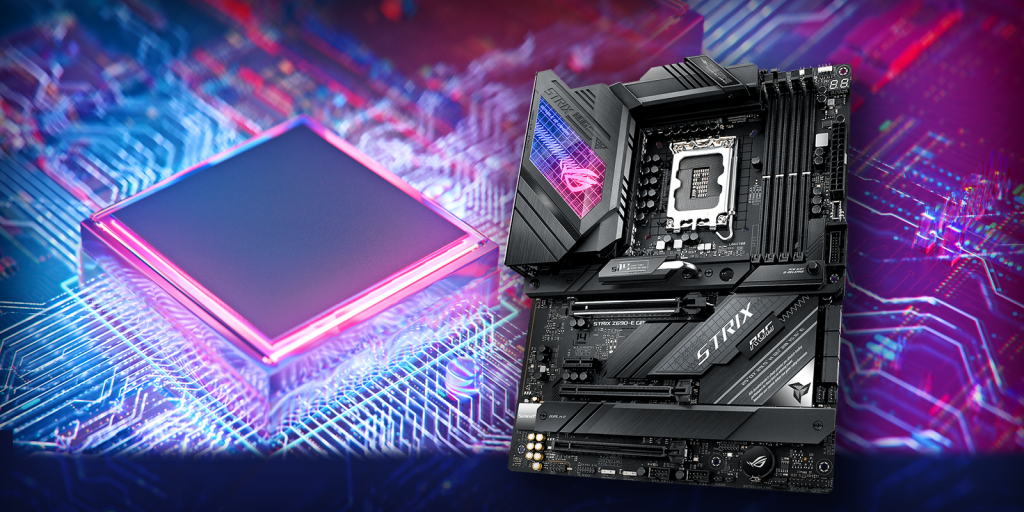
What to look for when buying a Motherboard?
Before looking at the different motherboards in the market, it’s important to consider a few factors that will determine which motherboard will work best for you. It’s not always that going for the latest and most advanced motherboard will pay off. You might want to take some time to weigh the different options.
Choose your CPU and chipset
As the war between Intel and AMD rages on, you have a choice to make on whether you will go with an Intel or AMD chipset. Motherboards will only work with a specific family of processors for which they are designed for.
You can start by choosing your preferred CPU, or if you don't already have it, you should at least have an idea of the CPU you want. This step will help you narrow down your options substantially and, at the same time, ensure you get a motherboard that leverages all the processing power that your selected CPU is going to have.
Even when choosing the CPU, there are some considerations you need to make:
- If you need thunderbolt support, you're better off with an Intel motherboard. There are several AMD motherboards that support the technology. But, Intel is the premiere in this aspect because they helped create thunderbolt technology.
- For the best multicore performance, you will want an AMD processor and, therefore, an AMD motherboard. The Threadripper and AMD 5000 Ryzen chips are particularly notorious for the significant core count over the Intel HEDT alternatives.
- For gaming performance, AMD is still the better option. But Intel follows close by and offers a good value-to-performance proposition.
What’s your form factor
After selecting the CPU, you will need to select the form factor. Because different form factors have different dimensions, that also means that your motherboard will vary in size depending on your preferred form factor.
Most builders prefer to use the standard ATX form factor. But if you’re tight on space or you simply want something smaller, you can opt for a mini-ITX form factor. There is also the Micro-ATX factor which is less common. If you want to go big, the Large E-ATX motherboards are a perfect choice. They are much wider and perfect for enthusiast-level units. They come packed with features and a price to match.
The form factor will affect not only the size but also the price of the motherboard. Mini-ITX motherboards will generally cost more, and you'll have fewer physical PCIe slots to use for your graphics, sound cards and other types of cards.
While deciding on which form factor works best for you, you will need to consider your space provisions and cooling.
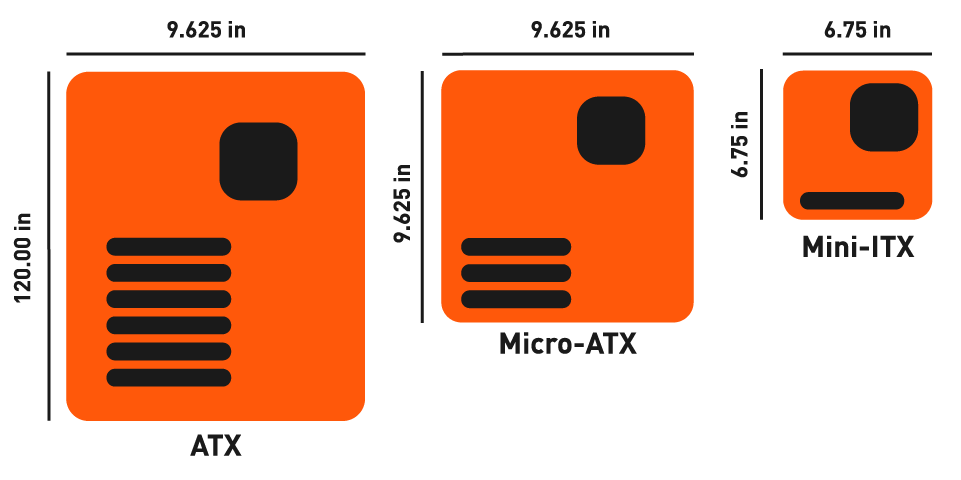
Features you need
Buying a motherboard based on the features you need is the best decision you can make. Gamers often make the mistake of buying motherboards out of pressure or the impulse to buy the latest release on the market. They end up with expensive hardware whose potential they can barely use. Some of the important features to consider when choosing a motherboard include:
- Upgrade path – As the gaming demands increase, you might want to upgrade your CPU. It might not be now but some time in the future. Purchasing a motherboard that makes the transition easy will save you money when the time comes. This is where buying the latest option pays off. The motherboards are fitted with the latest sockets and are often future-proofed.
- Port selection – Your port needs will vary depending on the type of gamer you are. Do you need lots of USM or audio connection ports? Do you need USB-C or Thunderbolt? What of HDMI ports? Because not all motherboards are created equal, you will need to read the spec list and pick a motherboard that meets your port selection.
- Networking considerations – Networking connections are particularly important for online gamers. If you're a power user, you can consider going for motherboards with advanced 10GB Ethernet support to avoid using add-in cards later. Some motherboards will also come with Wi-Fi support, but that tends to be more expensive with little tangible benefits.
- Internal connectivity – Some motherboards offer more internal connectivity by having more M.2 SSD slots or PCIe slots.
- Cooling – Cooling is essential, especially if you want to overclock your processor. You should go for a motherboard with a heavier VRAM and bigger heat sinks. Active fans are also a welcome addition that will prevent the components from roasting themselves.
Aesthetics
Whether you like it or not, aesthetics is an important part of gaming, and you want something that not only works great but looks great as well. Some gamers are crazy about synchronising the light show between the motherboard, cooler, case, and graphics card. If you're one of them, you will want a motherboard with integrated RGB headers.
Some motherboards go as far as having built-in software to help coordinate all the coloured lights. Alternatively, you can also opt for a "Dark" approach that doesn't have all the glittering lights but has a nice clean design. Whichever side you sway, it will affect how the motherboard looks and how much it costs.
Price
The final factor to consider when choosing the best motherboard is the price. Your budget is an effective consideration that will drastically narrow down your options. However, you shouldn’t fixate too much on the prices and end up with something that doesn’t make you happy or has a glitchy performance.
Motherboards aren't cheap, and they're just one of the several components you will have to buy if you’re building your first rig. If you’re on a tight budget, you will need to carefully balance your needs and wants for your budget to work.
Best Gaming Motherboards
Now that you know what to look for in the different motherboards, it’s time to look at some of the best motherboards in the market. Interestingly, because of the ever-advancing technology in the gaming scene, most of the best options are recent releases and might include some upcoming releases.
ASUS Z690 Motherboard
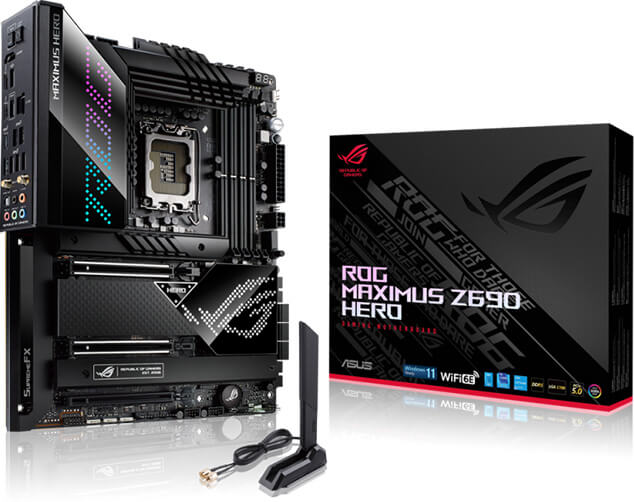
The Z690 is to Intel what the X570 is to AMD – A powerhouse with all the latest features. The Z690 features some of the biggest and most exciting changes that Intel has made in recent times. The Z690 motherboard was released in the wake of the Alder Lake CPUs release, which featured a transition from DDR4 to the newly emerging DDR5 RAM.
WHY NOT ALSO READ: BEST DDR5 MOTHERBOARD
The 12th Gen CPUs have many new possibilities and capabilities, making the Z690 motherboard chipset just as crucial in facilitating the performance of these new features and profiles.
The Z690 easily passes as the most advanced if not the best motherboard in the marketing currently, with a host of top of the line features that most other motherboards would only dream of.
PCI Express 5.0
While other motherboards are still singing praises to PCIe 4.0, the Z690 has already incorporated the newer PCIe 5.0 technology. The motherboard has 20 lanes. Sixteen are dedicated to graphics cards and cannot be used for anything else. All 16 lanes are tied to the primary PCIe slot.
The Z690 then has a second PCIe slot that can be configured to split in half and shared between the two PCIe x16 slots to allow for multiple GPU configurations.
You can use the remaining PCIe 5.0 slots for M.2 NVMe SSDs. But, there aren't any SSDs that meet this configuration on the market yet. But there are prototypes. Until these drives are ready and in the market, you can still use the lanes for M.2 PCIe 3.0 and 4.0 MVMe SSDs. This one feature says a lot about the future-proofing that has gone into the Z690.
The Z690 motherboard chipset also supports PCIe 4.0. it has 12 lanes that were not present in the Z590. The extra lanes on the chipset will most likely be used the same way as those on the CPU to connect other high-speed devices.
Double bandwidth
The Alder Lake CPUs for which this motherboard is designed to connect to the motherboard's chipset using an updated interface. Intel calls it "DMI 4.0." This updated interface has a theoretical bandwidth rated at 15.75Gbps. That is the same bandwidth as a PCIe 4.0 x8 interface. Such impressive speeds allow you to transfer data faster and get app responses quicker.
New socket
Intel has made it a tradition to change up their socket after every two generations. The Z690 comes with a new socket to match what the Alder Lake platform offers.
The motherboard features the new LGA 1700 socket. The number reflects the number of pins on the CPU, which is up from 1200 to 1700. This could also mean that the Z690 will be the go-to motherboard for some time to come, which means you will save money in upgrading because you won't have to do it soon. With its impressive features, you won't even need to worry about the motherboard being obsolete for quite some time.
Who is the Z690 For?
The Z690 is the ultimate motherboard for gamers who want the finest things in life and aren’t shy of forking out a small fortune to get the best and the latest in the market. The Z690 could very well be an enthusiast’s motherboard considering it has features for things that aren’t in the market yet. Paired with the performance of the 12th Gen Alder Lake CPUs, the things that this motherboard can do are impressive.
The Z690 is also ideal for hardcore gamers building a new rig and wanting some peace of mind in terms of future-proofing. With its features and capabilities, the Z690 will remain relevant and a force to reckon with for quite some time.
X570
The X570 motherboard is AMD's flagship motherboard for the Ryzen chipset. The motherboard is highly advanced and supports the Ryzen 3000(Zen 2) and Ryzen 5000 (Zen 3) CPUs. The motherboard is only AMD compatible and comes with the AM4 CPU socket.
The X570 was released in 2019 and, close to three years later, remains one of the best high-end motherboards in the market. It's a fantastic option for all future Ryzen owners. The chipset used on the X570 is one of the first ones to be designed in-house and manufactured by AMD.
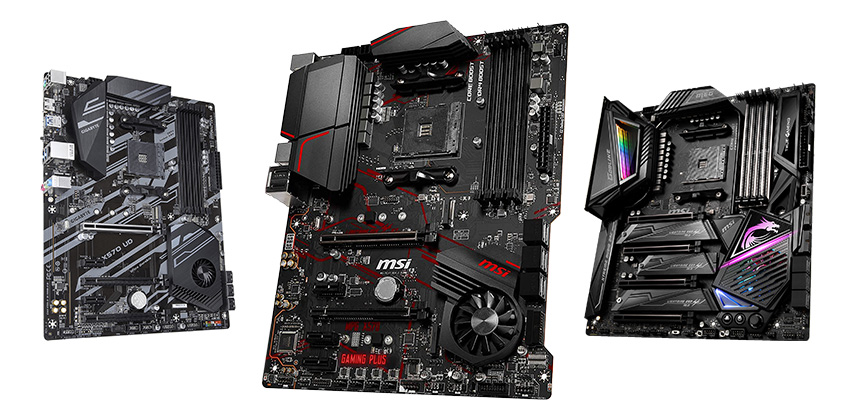
AM4 socket
The AM4 socket is a staple among AMD CPUs. The socket is featured in five CPU generations, including the Athlon X4, The Zen, Zen+ Zen 2 and Zen 3. It's also likely that the upcoming Zen 3D CPU lineup will also have the same AM4-based socket. That ensures that you can keep the X570 motherboard for longer before you need to upgrade.
At the moment, the X570 motherboard can support eight different CPU chipsets from AMD, which is quite impressive and gives gamers more variety and options to choose from.
PCIe slots
The X570 motherboard comes with PCIe 4.0 support. It has up to 20 usable PCIe 4.0 lanes. It's actually 24 lanes, but the fours are used for chipset downlink. Along with 16 PCIe4.0 lanes from the CPU, the X570 motherboard could pack up to 36 PCIe 4.0 lanes in total. The 16 lanes from the CPU are reserved for graphics, but OEM vendors can combine them into the following combinations;
- 1x4 NVMe
- 1x2NVMe + 2 SATA III
It’s also worth noting that the X570 supports multi-GPU setups. That means the PCIe 4.0 lanes can work in x8/x8 mode. That gives manufacturers more combination options across the 16 PCIe slots.
USB support
Everything about the X570 motherboard is impressive – even the USB support. The chip comes with up to eight USB 3.2 10Gbps ports. Combined with the four ports that come with the CPU, you have the potential of up to 12 USB 3.2 10Gbps ports.
The X570 also has support for USB 2.0 ports. The DDR4 support is another first on the X570 motherboard that breaks the 3000MT/s limit to 3200.
WHY NOT ALSO READ: DDR4 VS DDR5
In the past, AMD manufactured chipsets in cooperation with ASMedia. But the X570 motherboard chipset is designed in-house by AMD.
Power draw
Ideally, power consumption isn't a concern with some motherboards. But high-end motherboards have an appetite for power hence the need to be aware of this metric before committing.
The X570 motherboard chip has a TPD of 11W. It’s a substantial increase from the TDP of 4.8W of the X470. With such a jump in consumption, it’s necessary for the motherboard to have active cooling. That comes with the downside of increased noise production.
AMD released the X570S in 2021 with a lower TDP, with most of the features still intact. That allows the motherboard to use passive cooling. You will also be happy to know that, like most Ryzen Chipsets, the X570 supports overclocking.
CPU compatibility
The X570 motherboards support a variety of CPUs from AMD. They include the Ryzen 3000, Ryzen 5000 and Ryzen 5000 APUs, but not the Ryzen 3000 APUs.
The X570 motherboard chipset can also run the Ryzen 4000 APUs, which you can find in pre-built systems or on the used market.
What makes the X570 motherboard so impressive is despite being in the market for a couple of years, it still has a lot of longevity in it. As it stands, it's pretty likely that it will support the upcoming Zen 3D sometime in 2022. However, all indications point to the Zen 4 using a new AM5 CPU socket and having advanced features that will include PCIe 5.0 support.
Who is the X570 Motherboard For?
The X570 is a motherboard for the most serious gamers and with plenty of money to spend on their build. This motherboard doesn't joke around in terms of performance and supports a wide range of AMD CPUs. Whether you're going for a classic option or a more recent CPU, or even the soon to be released Zen 3D CPU, it's most likely this motherboard will have you set. If you're concerned about the noise from the active fans, you should consider going for the X570S, which has the same features, a lower power draw and can be passively cooled.
B550
The B550 motherboard is comparable to the X570. It is designed for power-hungry gamers that value flexibility and want total control over the overclocking capabilities of the motherboard. Like the X570, the B550 is AMD inspired and comes with numerous premium features that make it ideal for current and future applications.
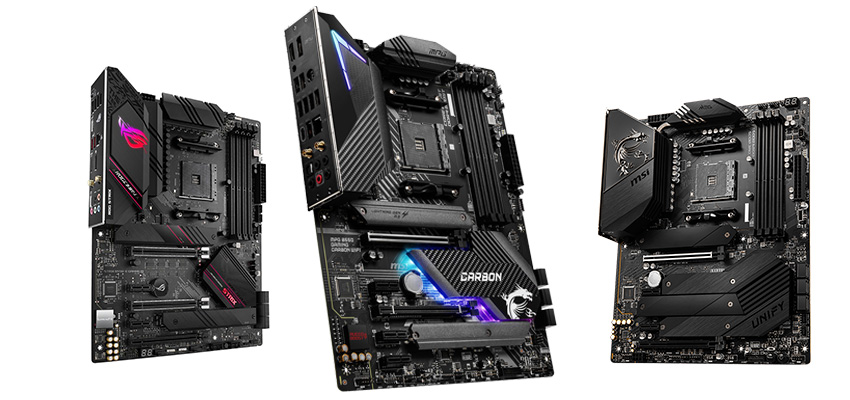
WHY NOT ALSO READ: B550 VS X570 MOTHERBOARDS
The B550 motherboard supports the Ryzen 3000, 5000 and Ryzen 4000 APUs. AMD originally planned to release the B550 together with the Ryzen 3000 (Zen 2) chipset. But the release date was postponed. The B550 was released in June 2020 as a follow up of the X570. Most of the features between the two motherboards are similar. But there are a few subtleties that could make the difference for gamers keen on the details.
AM 4 Socket
The B550 features the AM4 socket, which debuted in 2016 and is still widely used by AMD today. That would make the motherboard compatible with the current Ryzen 5000 (Zen 3) CPU lineup. Unlike Intel which keeps a tight ship on the socket of their CPU to only two generations, AMD has been more generous and maintained the socket for four generations.
The AM4 socket on the B550 motherboard supports the Ryzen 3000 and Ryzen 5000 CPUs. It also supports the Ryzen 4000 APU lineup. However, you can't pair the motherboard with the Ryzen 3000 APUs.
WHY NOT ALSO READ: BEST B550 MOTHERBOARD
PCIe support
The PCIe 4.0 support is one of the few areas where the B550 falls short. Unlike the X570, which has PCIe 4.0 lanes on the chipset, with the B550, you will only find the PCIe 4.0 lanes on the CPU. But in total, you should have about 20 lanes.
Out of the 20, 16 are for the GPU. The rest can be combined into a single x4 MVMe slot or different combinations of SATA III ports and lower bandwidth. However, the B550 does come with 10 PCIe 3.0 lanes. Two of these lanes can be repurposed as SATA III ports.
Of the 10 slots, eight are general purpose, and the two can be used in varying combinations;
- 2x PCIe 3.0 lanes
- 2x SATA III ports
The B550 motherboards can feature one x4 NVMe PCIe 4.0 slot and about two x4 NVMe PCIe 3.0 slots.
Other ports you can find on the B550 chipset include four SATA III ports. Two are optional and can be reconfigured from the available PCIe 3.0 lanes. There are also two optional SATA III ports from the CPU. That means you can get a total of up to eight SATA III ports.
As for USB support, the board has up to six USB 3.2 10Gbps ports from the CPU and up to two USB 3.2, 10Gbps, two USB 3.2 5Gbps and six USB 2.0 ports. That is all the ports you need for transfers and to add multiple peripheral devices.
CPU compatibility
You already know that the B550 supports the Ryzen 3000 and 5000 CPUs. But as for future CPU support, the B550 could also be compatible with the Zen 3D CPU lineup, which will launch soon and is expected to the 3D V-cache technology.
Although AMD has remained tight-lipped on the type of socket that this range of CPUs will use, it's evident that the CPUs are a quick-fix to counter the release of Intel's Alder Lake CPUs and will most likely be released anytime in 2022. But the Zen 3D lineup will probably be the last one to use the AM4 socket.
In a nutshell, as far as compatibility goes, it’s safe to say the B550 can support more or less the same CPUs as the X570.
Who is the B550 Motherboard For?
The B550 goes toe-to-toe with the X570 on most features. However, there are a few areas where the motherboard doesn't live up to the performance of the X570 despite being a newer model. It's still an impressive motherboard with premium features that are perfect for gamers that want superior performance but at a more modest price. But, you should know that the price isn't all that modest.
WHY NOT ALSO READ: BEST X570 MOTHERBOARD
B460
The B460 is an excellent entry-level gaming motherboard with exceptional features suited for gamers on a tight budget or just getting started with gaming.
The board comes with a variety of features depending on the manufacturer. But the B460 motherboard itself is from Intel and has a wide range of features.
B460 Chipset Features
Among the most impressive features that the B460 motherboard offers is support for 10th gen processors. The motherboard is also backward compatible with support for previous processors, including Intel Pentium and Intel Celeron processors. This makes the motherboard an excellent choice for new gamers and those that already have a rig. In most cases, you won't have to worry about buying a new CPU, and if you want some future-proofing, you can also go with the newer and more recent 10th gen processors.
Rapid storage technology
The B460 motherboard chipset comes with Intel’s RAID 0, 1, 5, and 10 technology. This feature allows you to add more SSDs and hard drives to your rig and provides quick access to the content on the drives. The features also enhance data protection against hard disk drive failure.
Improved PCI Express storage
With this feature, you can enjoy better boot support and management of PCI Express-based NVMe SSDs. The feature allows you to capitalise on the full features and speed your storage devices offer. Featuring advanced PCIe technology, you also get faster data transfer speeds.
This feature is also paired with the Optane Memory support that provides fast app response times for quicker responses of apps.
Connectivity
The B460 motherboard comes with various connectivity features. These include a 3.2 Gen port that provides superior data transfer performance with a rate of up to 5GBps.
The motherboard also has a USB 2.0 port with a design data rate of 480MBps. Besides the diverse connectivity, Intel has also included a unique feature in the B460 chipset called USB port disable. This feature allows you to enable and disable the ports as needed for added data protection.
PCIe 3.0
Although there are motherboards with better PCIe technology, for an entry-level motherboard, the B460 does an excellent job to add PCIe 3.0 interface with up to 8GT/s for fast access to peripheral devices and networking. The motherboard can come with up to 12 PCIe Express 3.0 lanes which are configurable depending on the design and the manufacturer of the motherboard.
Ethernet connection
With the Intel 10/100/1000MAC ethernet connection support, you get a faster connection for online gaming and average streaming.
Who is the B460 Motherboard For?
For hardcore gamers, the B460 is short-handed. But for entry-level and part-time gamers chasing an average and fluid gaming experience, the motherboard has just the right features and the right price to get you started with gaming on the right foot.
What makes it one of the best gaming motherboards in the market is its ability to balance cost and features, making it an excellent pocket-friendly but feature-filled motherboard.
Z590
Intel released the Z590 chipset for the Rocket Late 11th Gen processors at the beginning of 2021. At around the same time, Intel was officially moving to PCIe 4.0. Therefore, the goal with this chipset and the motherboard at large was to double the bandwidth to the CPU and allow for more hardware to maximise the chipset's performance.
The new motherboard also moved to the DDR4-3200 support, which was a new high for a product line that was stuck under 3000.
Although the motherboard was a flagship for Intel designed for Rocket Lake, it offered backward compatibility and could also work with the Comet Lake processors. These are just a few of the enticing features the Z590 motherboard has to offer.
Double the bandwidth
The Rocket Lake CPUs only have 8 cores compared to 10 from the previous generations. But the size of the cores is more generous. Vendors took advantage of this feature on the new processors to improve on the previous motherboard – the Z490.
The Z590 has doubled the CPU-to-Chipset link from DMI x4 link to a DMI x8 link, which increases the effective CPU-to-Chipset link bandwidth to PCIe 3.0 x8 link. It suggests that two PCIe 3.0 x4 drivers can be attached and run at full speed.
It's highly likely out of all the motherboards in the same 500 series. The Z590 could be the only one with this feature.
PCIe 4.0
On the Z590 motherboard, the processor can use PCIe 4.0. Intel has included a native CPU PCIe 4.0 support for this feature for the first time on the Z590 motherboard. There is a total of 20 lanes on the motherboard to enable a full x16 link for add-in cards and another PCIe 4.0 x4 for storage.
Vendors can split the x16 as necessary. This mainly works the same way as the previous mainstream motherboards. They can split the lanes x8/x8 or x8/x4/x4, whichever serves their purpose best.
USB support and connectivity
This motherboard also goes all out in terms of USB support. Its impressive array of USB support features include up to 3 USB 3.2 Gen 2x2 (20Gbps) ports, up to 10 USB 3.2 Gen 2x1 (10Gbps) ports, up to 10 USB 3.2 Gen 1x1 (5Gbps) ports and 14 USB 2.0 ports.
With the rise of online gaming, networking is also becoming a focal point for vendors. Intel has added a native Wi-Fi 6 MAX into the Z590 chipset. This is accessible through Intel’s proprietary CNVi interface.
The motherboard has a 2.5GbE connection for a faster and more stable internet connection for wired connectivity.
Thunderbolt
Lastly, the Z590 motherboard models have also added Intel's Maple Ridge Thunderbolt 4 Connectivity. There's not much difference between Thunderbolt 3 and 4, particularly because both allow for 40GBs of bandwidth, and they can both drive an additional display, but the more recent Thunderbolt 4 has the full specification standard. It comes with additional security and can support longer cables with lengths of up to two metres.
Who Is It For?
The Z590 motherboard is for Intel die-hards who want a smooth gaming experience without paying too much. Unfortunately, Intel has a habit of regularly changing the socket, and the Z590 could reach the end of the rope.
However, if you're interested in building a rig using the Rocket Lake chips, this is an excellent motherboard with vast features and capabilities that would make a fantastic foundation for your gaming PC build.
B560
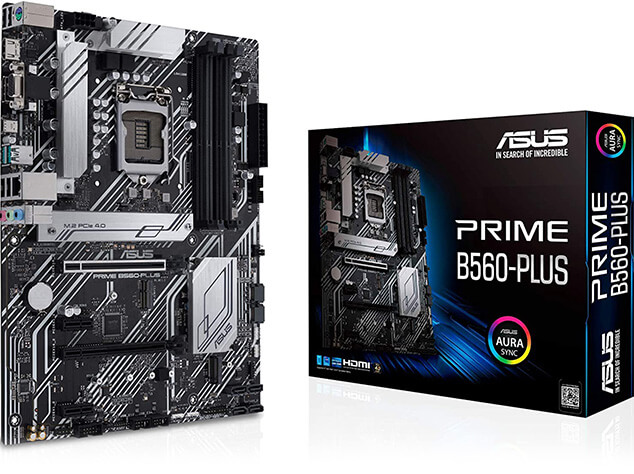
The Z590 was designed for users who wanted to push their CPUs to the limit. With its high prices and an increasing number of users who didn’t want to overclock, Intel had to come up with something that was more affordable and appealing to this crowd. The B560 motherboard was released.
The B560 is an upgrade to the older B460 model. It brings in some new features that include support for Wi-Fi 6 and USB 3.2 G2 ports, among other impressive features, while maintaining a lean price point.
Compatibility
Any gamer should be worried about the compatibility of the motherboard they select. The B560 will support some of the same CPUs that the Z590 supports. It will be compatible with 10th Gen Comet Lake and 11th Gen Rocket Lake processors.
PCIe support
Though modest, the B560 has PCIe 4.0 support. It will enable one PCIe 4.0 x4 M.2 CPU slots with additional slots being PCIe 3.0 from the chipset. It sounds an awful lot like what the Z590 has to offer, but if you dive into the details, there are a lot of differences.
USB support
One of the notable improvements of the B560 over the B460 is the native support for USB 3.2 G2 (10Gbps). This first came with the Z590 motherboard.
The B560 allows up to four USB 3.2 G2 ports on the B560, but vendors have ways to work around this to add more ports for a more generous selection of input and output options for the end-user.
Who is the Z590 Motherboard For?
There’s no doubt the B560 isn’t designed for the heavy hitters of the gaming world. It is a modest gaming motherboard with modest features and a modest price. But in the right hands, it makes an excellent sidekick that will deliver a superb gaming experience.
The B560 is perfect for entry-level and intermediate gamers. It is also good for hobbyists who don’t want anything too serious but still appreciate a good gaming experience.
Closing Remarks
The gaming arena is always moving. New technologies and discoveries are announced regularly. What might seem cool today might be obsolete tomorrow. That is why it makes sense to purchase the best options in the market.
These motherboards are the best in the market currently. However, you should note that different vendors have used the chipsets to design motherboards in the same class but with different features. Therefore, once you decide which motherboard you want, it's imperative to research it in-depth to see what vendor gives you the best performance and cost balance.

